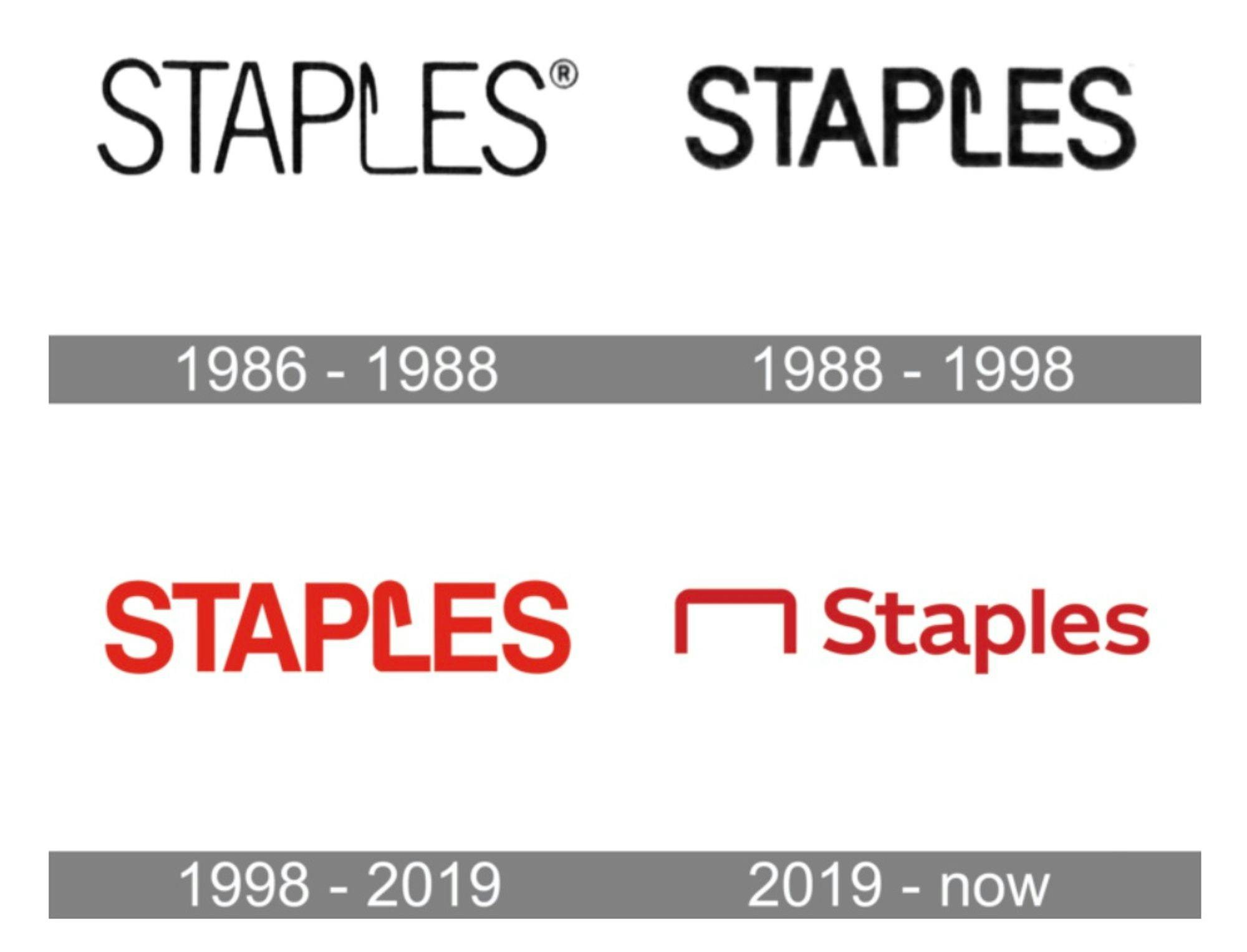What is a Brand Refresh?
Learn everything you need to know about brand refreshes here!
Companies change products. They also change logos, colors, and other identifying elements. They know that each change can impact their image. They revamp their brand, adopting a new identity. However, this is rare. More often, they change by refreshing their brand. This means updating, modernizing, and strengthening their image, and creating a different look and feel—without altering their nature.
Staples’ viral logo change was an example of a brand refresh. The company straightened out the staple in its logo and flipped it horizontally. This simple change was part of Staples’ global strategy. It aimed to appeal to a new generation by making small changes to its 40-year-old image as a professional office supply store. Staples did not want to alter its well-known image, but instead boldly announced its refreshed and modern brand.

Source: 1000Logos
What is a brand refresh?
A brand refresh is a strategic set of small identity updates. A brand refresh could be a response to competitors or market trends, or it could be a need to evolve a business without fundamentally changing its branding.
What are the elements of a brand refresh?
So, what can you actually change without changing who you actually are?
If we see rebranding as a transformation and a brand refresh as an improved version of yourself, you can refresh anything as long as you send a similar message. Companies may update their style guide with some minor changes without rebranding.
During a brand refresh, companies might also change:
- Logos
- Fonts
- Color palettes
- The style of writing and other forms of content
- Updating but not changing the messaging
Note that a significant product change may not rebrand a company. Consider Apple’s smart phones, laptops, watches, etc.—all its revolutionary products did not alter who Apple was, it only enhanced the image.
Rebrand vs. brand refresh
Apple rebranded twice in the 1970s and 80s. They did it a third time in 1998, famously with Steve Jobs' return and the release of the iMac. The logo was 19th-century-style, showing Isaac Newton under an apple tree. Then, it became their iconic bitten Apple. Why Newton? Why a bitten apple? Newton represented revolutionary science and discovery. The bitten apple added Adam and Eve’s defiance and knowledge. It may also have added the innovations of the Beatles and Alan Turing’s computers. Finally, the iMac introduced Apple’s most distinguishing elements—aesthetics and design.
After the iMac, Apple underwent a series of brand refreshes to its logo and overall look and feel. These changes and its new products (iPhones, iPods, iPads, AirPods, etc.) transformed Apple: it went from a small eclectic boutique into a powerhouse. Apple’s logo marks clearly show the differences between rebranding and brand refreshing.

Source: 3 Cats Lab
Rebranding is a fundamental change; brand refreshes are minor changes.
Coca-Cola will never change its red colors and famous font (rebrand), elements that define who it is. However, it constantly makes small changes (brand refreshes) to its messaging. It went from an image of a family drink in the 1940s to love and community in the 1960s and upward mobility in the 1980s.
Content management and brand refreshing
Companies need flexibility and ease of use in their digital assets. A modern Content Management System (CMS) facilitates brand refreshes.
To refresh, your content and digital factory teams need complete control over their web pages and their digital content. A modern CMS like Prismic allows you to change almost any part of a website, without altering the core messaging or image of the website. This aligns with the difference between refreshing a brand and rebranding.
There should be no need to recode your website to change logos, system-wide colors, and fonts. This is because a composable CMS follows the Content as a Service (CaaS) model as well as API-driven, headless architecture.
The management of assets pulls in changes to logos and images from outside the content. All content is separate from the design. Thus, a CMS separates user interface and experience elements, such as layouts and fonts, from the text and images.
A marketing team can update a single page to test a slight brand change. Then, they can quickly make that change global, all without an engineer's help. A rebrand, however, may require completely new wireframes and a recoding of the entire website.
Conclusion
Companies need both rebranding and branding refreshes. However, a brand refresh takes less time and resources and is more subtle, but it can sometimes have the same game-changing impacts as a full rebrand.